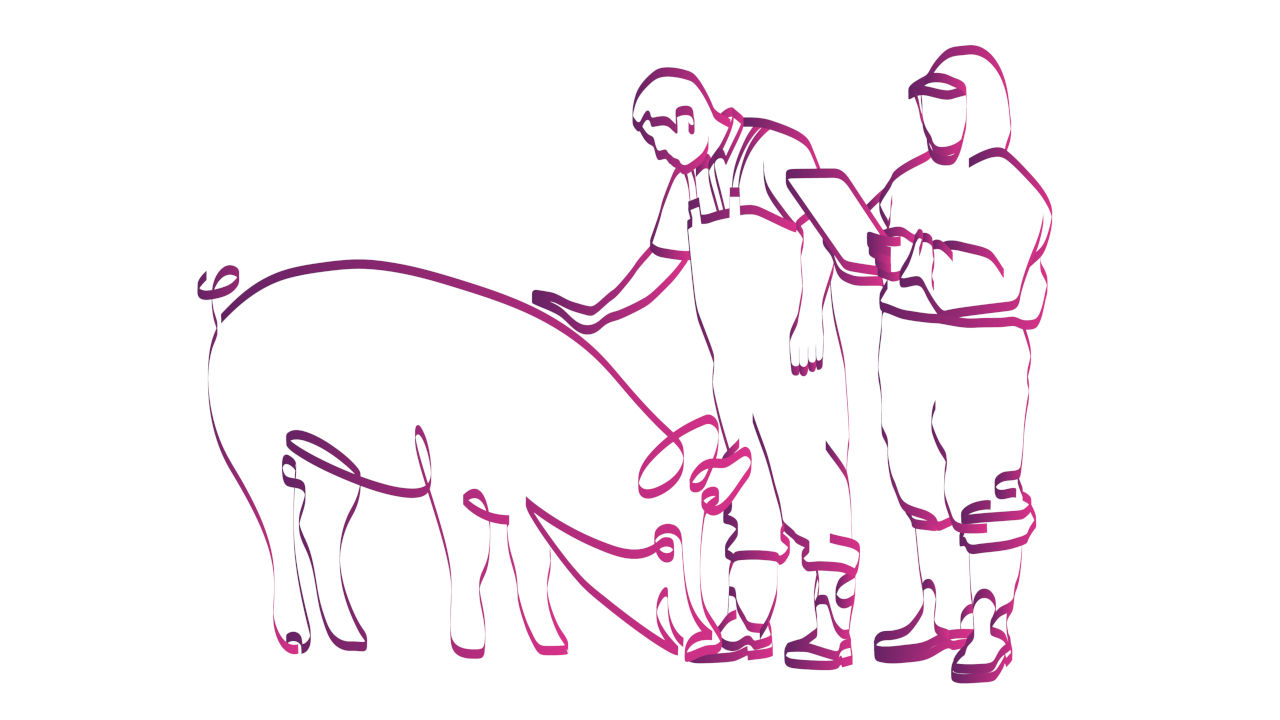‘The first ten minutes are the hardest’

Subject
Animal welfare, inspection
Target audience
Welfare inspectors
Inspector: Pieter (55) from the Netherlands
Whether an animal has sufficient room can be easily established by measuring the length and width of its stall, but categorising pigs according to weight simply by looking at them is far from easy. Never mind deciding whether there is sufficient enrichment, whether they may suffer from more than a mild disease or be wounded more seriously than the eye can see. My basic rule is: a happy pig is curious, approaches you when you enter the stall, breaths calmly and has sufficient room and bedding to play.
The fact that the rules leave room for interpretation may lead to discussions with the pig farmer. But I always try to explain that I am not there to issue fines but to help the farmer safeguard the animals’ well-being, in the pigs’ interest, and that of the farmer. A pig that has a stress-free life grows better and provides more meat. It’s that simple. Thus, I advise the farmer to personally offer lucerne to each pen, rather than tossing a straw briquette in a shute. This enables the farmer to make contact with the pigs and to check up on their health and well-being.
I do understand that farmers may not be happy about unannounced visits from someone like me. If I am pulled over by a police officer on the road, my first reaction is not to invite him to sit next to me. My main tip is: make the first ten minutes as pleasant as possible, as these are the hardest. I always operate on the assumption that the farmer’s intentions are good. For someone running a business with 10,000 animals and very low turnover, maintaining optimal circumstances is quite challenging. However, it is possible, and it is often the small changes that make a big difference. I once visited a farm where sick and injured pigs – suffering from infected legs and unable to stand properly- were housed together with healthy animals. This is not allowed, and the farmer had been fined several times. I advised him to create a small sick-bay in each of the stalls using a few wooden partitions. This kept the sick animals near but not in direct contact with the healthy ones. If sick animals remain in the group that eats and sleeps according to a fixed schedule, they are unable to rest and recuperate sufficiently and become weaker as a result.
Think from the pig’s perspective, is my message. We know that when sows have been removed from the group for five weeks to give birth and be fertilised, the hierarchy needs to be redetermined when they return to the group. If such a new sow is reintroduced to the group, she needs to be able to distance herself from the dominant pig to prevent being bitten. Pig farmers must accommodate this behaviour by creating sufficient room. And, they do. I have seen very creative examples. One farmer created an outdoor shelter using fences. Modifications such as these positively impact the pigs’ well-being. I enjoy sharing my experiences with colleagues, across borders through EURCAW-Pigs, and I was able to contribute to Better Training for Safer Food (BTSF) It is interesting to see how inspectors in other countries are always veterinarians, while this is not the case in the Netherlands. Some countries have been working on animal well-being for many years, while others are only now prioritising it due to the current European guidelines. We can help each other.’
